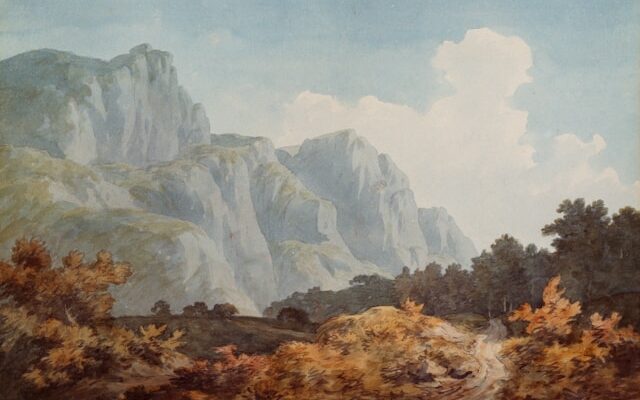
In the age of data, financial markets have become fertile ground for creative reinterpretation. What if the jagged peaks of a broker FX equity curve or the rhythmic oscillations of a currency pair could transcend spreadsheets and charts to become living artworks? By treating market data as raw material, artists and analysts alike can transform numbers into immersive installations, interactive sculptures, and thought‑provoking digital experiences. This article explores how visualizing market fluctuations through a conceptual‑art lens can reveal new insights into volatility, risk, and human psychology—while demonstrating practical techniques using platforms like metatrader 5 PC, TradingView, and FXStreet.
1. From Data Points to Artistic Expression
At its core, market‑data visualization in conceptual art involves:
- Abstraction: Distilling complex datasets (e.g., tick‑by‑tick forex feeds) into simplified forms—lines, curves, or shapes—that emphasize patterns over precision.
- Contextualization: Embedding financial metrics within cultural, political, or environmental narratives to spark critical reflection.
- Immersion: Leveraging sound, light, and interactivity so viewers experience volatility viscerally rather than intellectually.
These principles invite a deeper engagement with market dynamics, encouraging audiences to question the invisible systems that drive global economies.
2. Key Techniques for Market‑Data Art
| Technique | Description | Artistic Benefit |
| Generative Line Drawing | Render price series as continuous strokes | Highlights trend persistence vs. noise |
| Kinetic Sculptures | Motorized elements that react to live volatility metrics | Makes abstract data physically tangible |
| Projection Mapping | Map time‑series onto architectural surfaces | Transforms public spaces into market stages |
| Interactive Dashboards | Touch or gesture controls to explore historical feeds | Empowers viewers to “trade” the narrative |
These methods can be implemented using data exported from platforms like TradingView or a desktop terminal such as Metatrader 5 PC, which supports custom script exports for real‑time feeds.
- Step‑by‑Step: Creating a Generative Print Series
Below is a five‑step workflow for translating EUR/USD fluctuations into a minimalist print collection: - Data Extraction
○ Use metatrader 5 pc to export tick data for your target pair over a chosen period.
- Data Cleaning
○ Filter out outliers and normalize timestamps.
- Algorithmic Mapping
○ Apply a simple rule (e.g., price change maps to line angle).
- Generative Rendering
○ Write a script in Processing or p5.js to draw each line segment.
- Print & Display
○ Produce high‑resolution prints and exhibit as a series annotated with dates or volatility metrics.
By following this pipeline, artists can emphasize subtle shifts—such as micro‑volatility—that often escape traditional charting.
4. Numbered Examples of Notable Projects
- Volatility Pendulum
A kinetic sculpture where pendulums swing in proportion to intraday FX volatility, creating a living “heartbeat” of market stress. - Order‑Book Tapestry
A woven fabric whose color gradients reflect bid‑ask depth in real time, sourced from APIs on FXStreet. - Sentiment Soundscape
An audio installation converting net long/short positions into evolving musical motifs, using volume‑weighted data from social‑sentiment feeds. - Flash Crash Light Show
A timed light projection that simulates the abrupt drops of historical flash‑crash events across urban facades. - Geo‑Mapped Liquidity
An interactive map overlaying FX liquidity hotspots onto city street grids, revealing the global flow of capital as site‑specific murals.
Each of these works employs market data not as mere illustration but as generative input—turning numeric fluctuations into experiential narratives.
5. Balancing Aesthetics and Analysis
While conceptual art often prioritizes critique and reflection, financial contexts demand rigor:
- Accuracy vs. Abstraction
Determine the right level of fidelity—in some pieces, precise timestamps matter; in others, approximate patterns suffice. - Live vs. Static
Decide whether to stream live data (for immediacy) or use historical slices (for curated narratives). - Interactivity
Offer viewers control (“scrub” through dates, select volatility thresholds) to encourage exploration.
Tools like Investopedia’s FX guide can help non‑technical collaborators grasp fundamental concepts, ensuring artistic intent aligns with market realities.
6. Ethical and Conceptual Considerations
- Data Ownership
Confirm licensing or API‑access terms before redistributing feeds from commercial providers. - Market Sensitivity
Avoid inadvertently influencing real markets—e.g., by broadcasting misleading price visuals during trading hours. - Cultural Context
Be mindful of how financial imagery may resonate differently across audiences—what seems abstract in one community can symbolize inequality in another.
A thoughtful approach respects both the integrity of the data and the lived experiences of diverse viewers.
7. Next‑Generation Platforms and Integrations
Emerging technologies offer new frontiers:
- Web‑based Interactive Canvases
Use WebGL and D3.js to build browser‑based installations that render FX feeds in real time. - Augmented Reality Overlays
Layer live currency charts onto mobile camera views of city streets, blending finance with urban landscapes. - Machine‑Learning Aesthetics
Train generative‑adversarial networks (GANs) on historical volatility clusters to produce novel visual motifs.
By combining these innovations with established terminals like Metatrader 5 PC, creators can push the boundaries of both art and data science.
Conclusion
Transforming market fluctuations into conceptual art opens new dialogues between finance, technology, and culture. Whether through generative prints, kinetic sculptures, or immersive projections, the broker fx ecosystem becomes a canvas for critical reflection—revealing the rhythms, tensions, and hidden patterns that shape global economies. As platforms evolve and data access expands via services like TradingView and FXStreet, artists and analysts alike have an unprecedented toolkit for visual storytelling. Embracing this interdisciplinary practice not only enriches our aesthetic landscape but also invites fresh perspectives on the markets we inhabit.